6 bug-riddled messes that eventually became great games
Some of our favorite PC games started life in much worse shape than they exist in today.
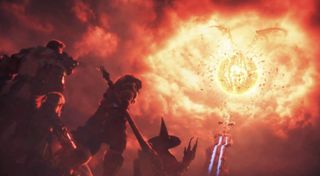
There's a particular agony in waiting for a game you're really excited for, booting it up on day one, and running into a game-breaking bug. It's hard to Google your issue, because it isn't well-documented yet. Maybe you just misunderstood? It couldn't be this broken, could it? But it could. Some PC games never recover from buggy launches and stay buggy forever, while others improve over months of hard work from the developers—or fans—to become the games we hoped they would be.
Unlike the worst launches in PC gaming history, you won't find games here that were briefly marred by server errors like Diablo 3, or mismatched with expectations like No Man's Sky. You also won't find games that, after many rounds of updates, still ended up disappointing. The games below were infamously buggy at launch, but recovered from that bad start and are beloved today.
Total War: Rome 2 (2013)
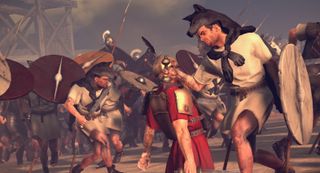
How it launched: It was immediately obvious that Rome 2 was overly ambitious. The campaign map was massive—and laggy. Even on top-end hardware, Rome 2 ran poorly, buckling under the strains of an upgraded but unoptimized engine. If performance was Rome 2's only problem, that would've been forgivable. But aspects of Rome 2's AI were completely broken at launch.
The AI couldn't use siege equipment or would choose to assault every city by only attacking a gate, ignoring the walls and funneling an army of 10,000 into an easily defended choke point. Battles, the lynchpin of Total War games, were a joke. Total War had never had a launch this rough before, and the developers quickly released two statements addressing its problems. "I'm hoping we can fundamentally treat our releases differently in the future," wrote Rome 2's creative director. Yow.
How it ended up: It took many rounds of patches to stop the game from slowing to a crawl and to give the AI the brains to put up a decent fight. The patch notes are extensive, and I remember following along at the time, waiting for the updates to finally add up to a game that was playable without a major asterisk. After a year, Creative Assembly released the free Emperor Edition, which included the improvements of around 20 cumulative patches and overhauled the political system and some build trees. Rome 2 was, finally, in good shape.
Vampire: The Masquerade - Bloodlines (2004)
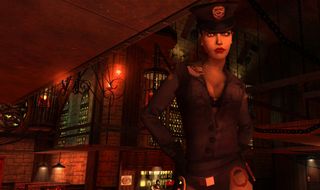
How it launched: Vampire: The Masquerade - Bloodlines released in November 2004. In February 2005, developer Troika Studios closed its doors. Not a great sign—especially for a game that was deeply broken at release. In a 2013 interview, writer Brian Mitsoda said "It was dumped on the market at the worst possible time—most people didn't even know we were out. Both fans and the Troika devs are always going to wonder what the game could have been like with another six months."
Bloodlines simply wasn't finished, and that made the game hard to finish for players, with bugs and broken quests galore. It was so bad, it's actually still being patched today.
The biggest gaming news, reviews and hardware deals
Keep up to date with the most important stories and the best deals, as picked by the PC Gamer team.
How it ended up: Troika Studios died, but Vampire: The Masquerade - Bloodlines didn't. Fans started developing an unofficial patch to fix Bloodlines' worst issues, and somehow that effort has been going on for 15 years now. Unofficial Patch 10.8 was just released on November 27, 2020. It's grown far beyond just bugfixing, restoring cut content including characters and endings and much more. It's thanks to those fans that Bloodlines is still played and remembered today, and without them, Bloodlines 2 probably wouldn't be in development.
Star Wars: Knights of the Old Republic 2 (2004)
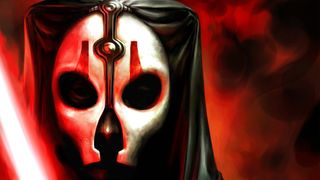
How it launched: Development of Knights of the Old Republic 2: The Sith Lords was rushed. Really rushed. Full development started in October 2003, and Obsidian shipped the game in December 2004. In the end, there just wasn't enough time for Obsidian to fit everything it planned into this ambitious RPG sequel, which took a far more nuanced approach to The Force than anything bearing the Star Wars name had before. An entire planet, and much more, never made it into the final game. Virtually every videogame ends up being cut down to hit its release date, but KotOR 2 was certainly an extreme example.
And even with those cuts, The Sith Lords was buggy. It's maybe the buggiest game I've ever completed, with quests and even save files breaking on me throughout the adventure—and that was after I installed a fan-made patch.
How it ended up: Like Vampire: The Masquerade - Bloodlines, KotOR 2 became a better game thanks to its community. A mod first released in 2009 fixed many of the game-breaking bugs, and further updates over the next several years improved cutscenes, squashed more bugs, and eventually added the droid planet M4-78EP, cut from the original game. The mod is an essential part of KotOR 2 today.
Final Fantasy 14 (2010)
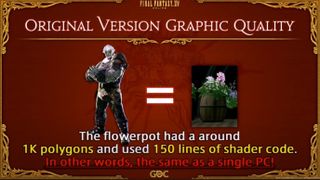
How it launched: One of the most spectacular failures in gaming history, which Square Enix fully owned up to—then turned into gaming's greatest resurrection. Final Fantasy 14's relaunch as A Realm Reborn is a well-documented success story that you can read about in-depth here, but those stories largely focus on what went wrong in development and how Square Enix righted the ship. It's still interesting to look back at exactly what was wrong with the game itself, as it launched in 2010. We scored it a 30 at the time, writing that its story was "buried behind one of the most heinous interfaces ever devised, and strangled by lag issues, framerate dips and a nightmarish control scheme that goes out of its way to make even basic actions like checking your inventory a long and irritating exercise in menu-faffing." So, not great.
My favorite example of what went wrong came from Naoki Yoshida, the director who took over Final Fantasy 14, in a 2014 GDC talk. Why was the game basically unplayable at launch, even on a powerful PC? Maybe because a single flower pot was drawn with about as many polygons as a player character. Final Fantasy 14 collapsed under the weight of bugs, bad interface design, and wildly unrealistic graphics for an MMO.
How it ended up: After launching an entirely new version of Final Fantasy 14 in 2013, the MMO has just gotten better and better. As we wrote of 2019 expansion Shadowbringers, "Final Fantasy 14 is quietly one of the best games in the series, but Shadowbringers elevates it even further." We gave it our 2019 award for best expansion, and it's high on our list of the Top 100 PC games to play this year.
Dark Souls (2012)
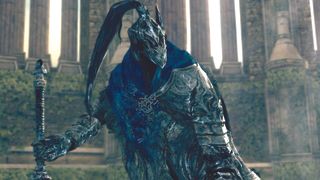
How it launched: Dark Souls wasn't exactly a great performer on the Xbox 360 or PlayStation 3 back in 2011, with the framerate famously entering slideshow territory in areas like Blighttown. But hoo boy, was the PC version that launched a year later even worse. The mouse and keyboard controls were terrible. Audio didn't work properly. Folks, you couldn't change the resolution. Its many failings would've tanked almost any other PC game, but they didn't tank Dark Souls.
How it ended up: Thanks to modder Durante, the PC version of Dark Souls quickly became the definitive version. The unlocked resolution helped show off From Software's art direction, the sound worked properly, and the PC's power bulldozed over the console performance issues. Later mods even unlocked the 30 fps cap and made it easier to play co-op online with friends. Dark Souls sold millions on PC, cementing the series in the west and ushering in a new era for Japanese PC gaming. That version of Dark Souls was replaced by the Remastered edition in 2018, which no longer requires mods to be playable. But it remains fertile grounds for modders nevertheless—one group is currently making a direct sequel to the game, using Dark Souls' assets to create an entirely new map.
The Witcher (2007)
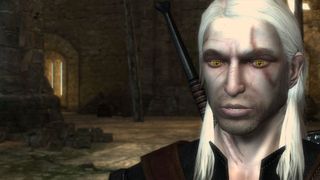
How it launched: Today CD Projekt Red is one of the biggest names in PC gaming, but it was a very different—and far less experienced—studio back in 2007. The first Witcher game was built on the bones of BioWare's aging Aurora engine, and even when I played it years later on faster hardware, its performance wasn't exactly smooth. And I was playing the Enhanced Edition, a massive update CD Projekt released for The Witcher in 2008. Exactly how much of a mess was The Witcher on first release? A Kotaku article from 2008 touches on some of the key improvements in the Enhanced Edition, including 80 percent faster load times, an overhauled alchemy system, rewritten translations, and hundreds of new motion captured animations added to cutscenes so characters weren't just standing around.
That Enhanced Edition update was the culmination of a year of game patches that fixed up many, many bugs, some small, some not so small. Imagine running into something like this in a 50 hour RPG: "The game will not make an autosave if Geralt has an effect preventing him from talking (like knockdown, stun, push). The result would be no talking at all for the rest of the game."
How it ended up: After the Enhanced Edition, The Witcher was still rough around the edges, but the updates helped its better qualities shine through. The Enhanced Edition got rid of the most egregious issues—unlike Vampire: the Masquerade and KotoR 2, The Witcher didn't warrant years of fan patches just to make it playable. It was an ambitious RPG for CD Projekt Red, and gave the studio the experience they needed to make a strong sequel—and to then follow that with one of the best RPGs of the decade.

Wes has been covering games and hardware for more than 10 years, first at tech sites like The Wirecutter and Tested before joining the PC Gamer team in 2014. Wes plays a little bit of everything, but he'll always jump at the chance to cover emulation and Japanese games.
When he's not obsessively optimizing and re-optimizing a tangle of conveyor belts in Satisfactory (it's really becoming a problem), he's probably playing a 20-year-old Final Fantasy or some opaque ASCII roguelike. With a focus on writing and editing features, he seeks out personal stories and in-depth histories from the corners of PC gaming and its niche communities. 50% pizza by volume (deep dish, to be specific).
Most Popular


